
views
Holding Your Bladder

Distract yourself mentally. As your bladder fills, nerve endings in the pelvis send signals to your brain that it is time to relieve yourself. Because the urge to urinate originates from these nerve signals, try to distract yourself by thinking of something else. Try to think complex thoughts, like brainstorming ideas for a new project at work or coming up with a solution to a scheduling issue at home. If you think of simple thoughts -- like counting to 10 or going over the alphabet -- this will not fully distract you from your body's signals to urinate. If you can wear headphones and have access to your phone or computer, try listening to the news or a podcast with a complex story. Taking in outside information will help you ignore the urge to pee.
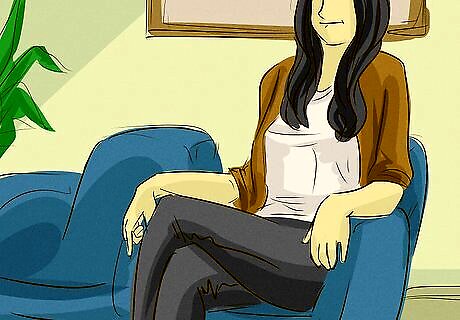
Relax your muscles. You will naturally feel the urge to cross your legs and keep pressure on your pelvis. While you can do this, you should keep the rest of your body relaxed as this will distract you from the discomfort of a full bladder. Roll your shoulders backwards and forwards. Roll your head from side to side. This will relieve pressure on your spine and neck that you might feel if you are keeping a tense posture. If you are sitting, cross your legs so you exert slight pressure on your bladder. Square your shoulders and extend your spine. This will help you sit up straight. Do not slouch as this will put extra, unnecessary weight onto your bladder. If you are standing, position yourself with your feet parallel and your toes touching. Distribute your weight evenly across each leg and stand tall. You might feel the urge to cross your legs while standing, but try to avoid doing this. Crossing your legs will feel awkward because it will put an uneven amount of weight on one leg.
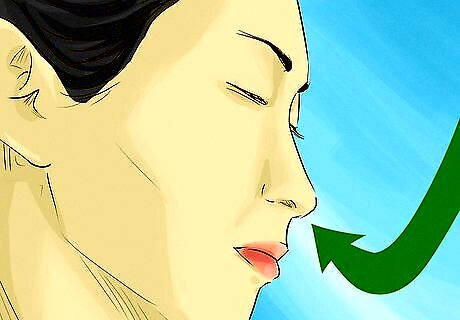
Breathe deeply. If you cannot access a bathroom when you need to urinate, this will cause a significant amount of mental and physical stress. Breathe deeply from your diaphragm, pushing out the muscles in your lower belly as you inhale and drawing them back in as your exhale. This deep, measured breathing will relieve pressure on your pelvis. It will also relax other muscles in your body that may feel very tense or constricted.
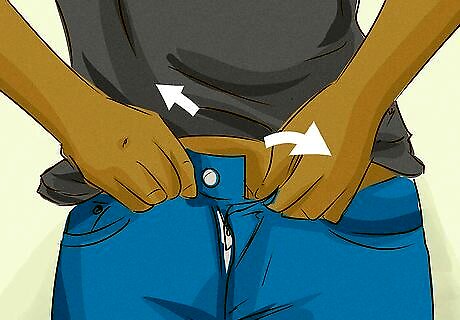
Avoid constrictive clothing. If you are wearing very tight jeans or shorts, try to loosen them or change into a different pair of pants. They may be putting undue pressure on your bladder. Obviously, if you are in public, do not unzip or unbuckle your pants.
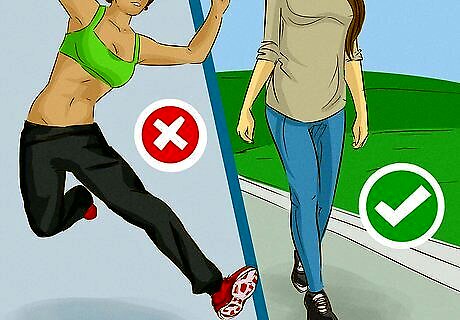
Avoid making any disruptive movements, such as bouncing, shaking, or jumping. If you have to walk, move very slowly.
Strengthening Your Bladder
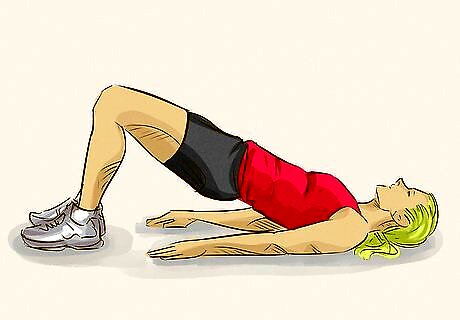
Practice Kegel exercises. One of the key steps in avoiding uncomfortable pain from holding a full bladder is to strengthen your pelvic floor muscles (which are located at the base of the bladder). By completing these exercises, you can strengthen your bladder and experience less frequent urges to urinate. To find where your pelvic floor muscles are located, go to the bathroom and urinate. While you are peeing, try to stop urinating mid-stream. If you can stop, then you have found the correct muscles. To complete Kegel exercises, tighten your pelvic floor muscles while you are sitting or lying down. Hold the contraction for five seconds and then release for five counts. Repeat this exercise four to five times. Continue to practice this exercise until you can tighten these muscles for ten seconds at a time. You should do three sets of 10 contractions each day.
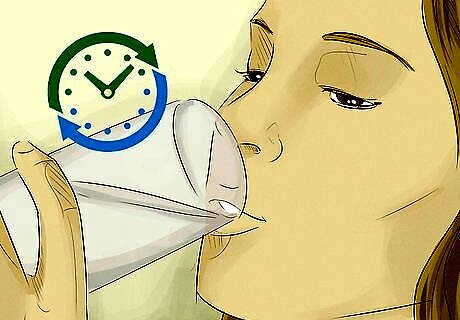
Regulate your hydration. If you are someone who drinks large quantities of liquid in short spurts (such as after exercising or when you have a break during the day), then stagger your liquid intake so you are drinking smaller amounts of liquid throughout the day. This will relieve pressure on your bladder. Keep a bottle of non-carbonated water by your desk and take a sip every 5-10 minutes. You should generally aim for 9 cups of water (or 2.2 liters) every day.
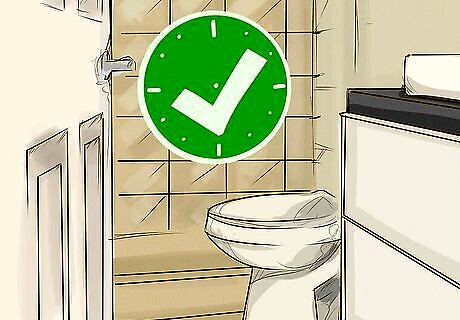
Set a regular bathroom schedule. Your bladder will become a stronger organ if you train yourself to urinate on a regular schedule. If you schedule regular bathroom trips every 2-4 hours, then you will experience less frequent urges to urinate at unexpected times.
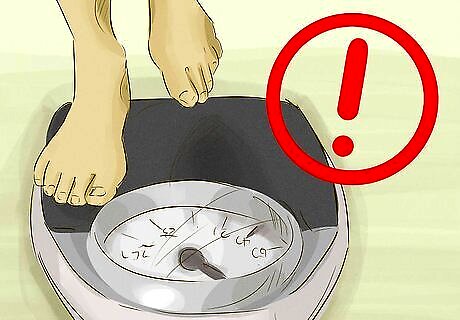
Watch your weight. Studies have shown that excess weight and obesity can create an overactive bladder. If you are experiencing frequent urges to pee and are also overweight, try shedding some pounds to see if this will help relieve your symptoms. You should always consult with your doctor to find the best way to lose weight. Generally, you will need a combination of moderate cardio exercise (running, walking, swimming, hiking), 3-4 times a week and a healthy diet of lean proteins, fruits, vegetables and whole grains. Avoid foods that are high in sugar, fat and processed carbohydrates, such as white bread, white rice, white pasta, popcorn, chips, cookies, brownies, cake, ice cream, etc. Sugary drinks like soda and cocktails should also be avoided or only consumed in very small quantities.
Preventing Future Accidents
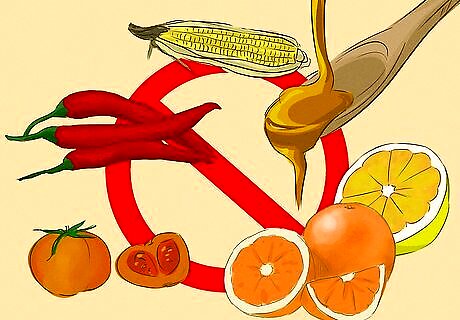
Consume the right foods. Certain foods have been shown to irritate the bladder and cause frequent urges to urinate. If you have a persistent need to urinate, you should avoid consuming the following: Acidic fruits (oranges, grapefruits, lemons) Spicy foods Chocolate Corn syrup Tomatoes and tomato-based sauces
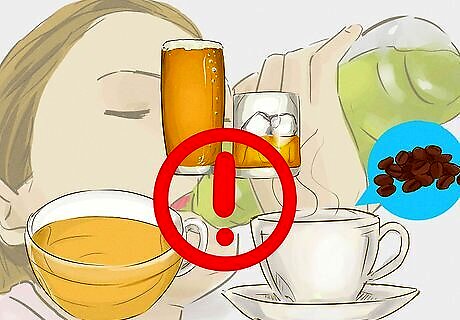
Avoid irritating beverages. Similarly, certain beverages can also have negative effects on the bladder. Consuming the following drinks may diminish your bladder's ability to hold urine: Sugary, carbonated drinks like soda Drinks with artificial sweeteners (like diet sodas) Coffee and tea Excessive consumption of alcohol (more than 5 drinks a week) Fruit and vegetable juices from oranges, grapefruit, and tomatoes If you have a problem with urinary leakage or a persistent urge to pee, then try eliminating these foods and drinks for a week and see if the problem has improved. You can slowly reintroduce one or two items from these lists to see which one is the biggest irritant to your bladder.
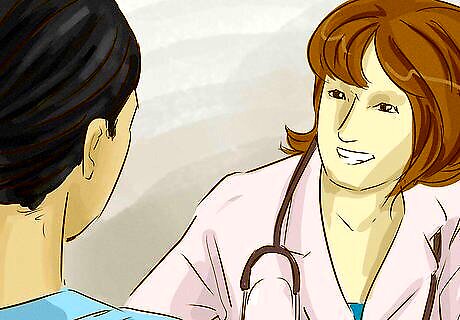
Talk to your doctor. If you are experiencing longterm issues with urination, such as pain in the bladder or a persistent, constant urge to pee, then speak to your doctor about the best way to treat your symptoms. If you are currently taking medicine for another condition such as high blood pressure or depression, this could be negatively impacting your bladder. Talk to your doctor about adjusting your dosage or switching to a medicine with fewer side effects. You might be reluctant to talk to your doctor about your bladder issues because you think they are embarrassing. But you shouldn't hesitate to seek treatment; bladder pain could be the sign of something much larger, such as cancer or a problem in another organ such as your kidneys, so go ahead and talk to your doctor. Medicines such as Mirabegron and botox injections to the bladder are also sometimes used to treat incontinence.




















Comments
0 comment